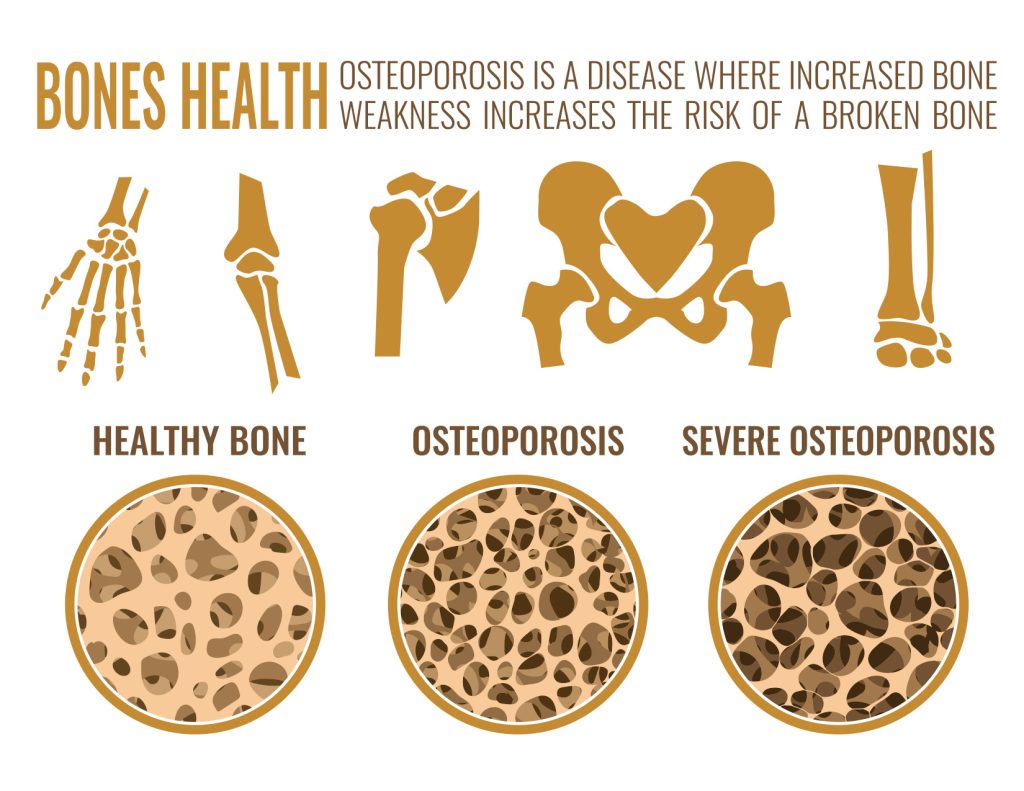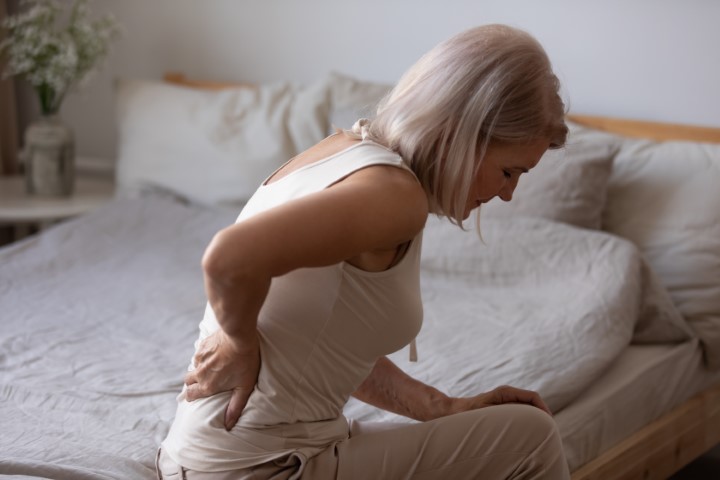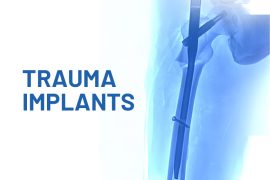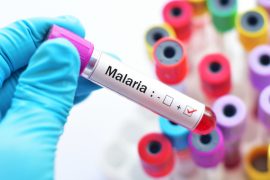The word “Osteoporosis” means “porous bone” in Latin. Osteoporosis is a medical condition in which the bones become extremely weak. In this condition, the bones become so brittle that they are susceptible to unexpected and sudden fractures. Usually, these fractures occur in the hip, wrist, or spine area. A healthy bone has small spaces on the inside. When the bones are affected by osteoporosis, the space inside the bones increase. This causes the bones to lose their density and strength, and the outside of the bones also grows weaker.
The disease often develops without any symptoms and is not diagnosed until the bones fracture or break at the slightest of stress. About 200 million people around the world are estimated to be living with osteoporosis. Although this disease can occur in both women and men, women are four times more likely to develop osteoporosis as compared to men. The disease can affect people of any age, but it is more common in old people.
Symptoms of Osteoporosis
Osteoporosis does not cause any symptoms during the early stages. In most cases, people with osteoporosis may not be aware that they are affected by the condition until the first fracture. However, once the bones have been weakened by osteoporosis, you may display the following symptoms:
- Backache
- Loss of height
- Change in posture such as stooping
- Shortness of breath
- Sudden and frequent bone fractures
Causes of Osteoporosis
The bones in our body are in a constant state of renewal, as the old bones are broken down and new bones are formed. In younger people, the new bones are formed faster, before the old ones are broken down and the bone mass also tends to increase. This process slows down after the early 20s and people reach their peak bone mass by the age of 30. The higher the peak bone mass, the lower the risk of osteoporosis.



Risk Factors of Osteoporosis
Several factors are likely to increase your risk of developing osteoporosis. They are:
Age: This is the biggest risk factor for osteoporosis. The older you get, the greater your risk of developing the condition.
Sex: Women are more likely to develop osteoporosis in comparison to men.
Race: People who are of Asian or Caucasian descent are at a higher risk of osteoporosis.
Weight: People with smaller body frames and lower weight are more likely to develop osteoporosis as they have less bone mass to draw from.
Hormone Levels: Lower sex hormones in the body tend to weaken the bones. This is why women at menopause are at a higher risk of developing osteoporosis, as the estrogen levels in the body reduce.
Thyroid: Excessive thyroid hormone can lead to bone loss. This can occur if you have hyperthyroidism (overactive thyroid) or consume too much thyroid hormone medication to treat hypothyroidism (underactive thyroid).
Low Calcium Intake: Less intake of calcium plays an important role in the development of osteoporosis. Low calcium can lead to diminished bone density and increases the risk of fractures.
Eating Disorders: Being underweight and restricting food intake also leads to osteoporosis as there is less bone mass to draw from.
Steroids: Long-term use of corticosteroid medications, oral or injected, interferes with the bone-rebuilding process.
Sedentary Lifestyle: People who indulge in less physical activities have a higher risk of osteoporosis as weight-bearing exercises and other activities such as walking, running and dancing are beneficial for the bones.
Diagnosis of Osteoporosis
Before the doctor runs any other tests, he will review your medical history to find out if you have had any medical conditions that could lead to osteoporosis. The doctor will first check if you have a family history of osteoporosis. Once verified, the following are the tests that your doctor might suggest to determine if you have osteoporosis.
Blood Tests: The doctor may run blood tests to check for the condition that may lead to bone loss or reduction in bone density.
Bone Density Test: Also known as Bone Densitometry, this test uses an x-ray to measure the density of your bones in the wrists, hips, and spine. This can take up to 10 – 30 minutes.
Preventive measures
Maintaining a good diet and an active lifestyle play an important role in keeping your bones healthy. Some risk factors such as age, race, and gender cannot be changed. However, there is a certain measure you can take to reduce the chance of developing osteoporosis.
Include calcium in your diet: An adult should consume about 1,000 milligrams of calcium on an average, a day. Some of the best sources of calcium include dairy products, green leafy vegetables, salmons/sardines, tofu, cereals, and more. However, if you are unable to include enough calcium in your diet, you can also consider taking calcium supplements.
Vitamin D: Vitamin D enables the body to absorb calcium, which in turn helps improve bone health. Vitamin D can be obtained from exposure to sunlight and dietary sources such as cod liver oil, salmons, and fortified milk.
Regular Exercise: Having a regular exercise regimen can help strengthen bones and slow down bone loss. Weight-bearing exercises such as walking, jogging, and rope skipping strengthen bones in the legs, hips, and lower spine.
Treatment of Osteoporosis
The treatment for osteoporosis depends on the results of the bone density test. If your risk of bone-breaking and fracture isn’t high, the treatment may not include medications and will focus on reducing risk factors and strengthening your bones.
Hormone Therapy
Estrogen, especially after menopause, can help maintain bone density. However, it might also cause other diseases like breast cancer and blood strokes.
Medication
If you are diagnosed with severe osteoporosis, or if the other treatment methods do not work, the doctor might suggest medications.
Though osteoporosis is not completely curable, one can take the necessary treatment to keep the bones strong and healthy. Several risk factors are not under our control such as age, race, and gender. However, making certain lifestyle changes like regular exercising, stopping tobacco and alcohol usage, and increasing calcium intake can help keep osteoporosis at bay. So, keep yourself aware of your risks and approach your doctor immediately when you start noticing symptoms to treat osteoporosis in the early stage.
Disclaimer: This blog is only for awareness purpose. We do not intent to promote any medications given in the blog. Please consult your physician before taking any medication.





Comments are closed.